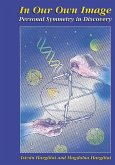Our earlier book, How We Know: An Exploration of the Scientific Process, was written to give some conception of what the scientific approach is like, how to recognize it, how to distinguish it from other approaches to understanding the world, and to give some feeling for the intellectual excitement and aesthetic satisfactions of science. These goals represented our concept of the term "scientific literacy." Though the book was written for the general reader, to our surprise and gratification it was also used as a text in about forty colleges, and some high schools, for courses in science for the non-scientist, in methodology of science for social and behavioral sciences, and in the philosophy of science. As a result we were encouraged to write a textbook with essentially the same purpose and basic approach, but at a level appropriate to college students. We have drawn up problems for those chapters that would benefit from them, described laboratory experiments that illustrate important points discussed in the text, and made suggestions for additional readings, term papers, and other projects. Throughout the book we have introduced a number of chapters and appendices that provide examples of the uses of quantitative thinking in the sciences: logic, math ematics, probability, statistics, and graphical representation.
Dieser Download kann aus rechtlichen Gründen nur mit Rechnungsadresse in A, B, BG, CY, CZ, D, DK, EW, E, FIN, F, GR, HR, H, IRL, I, LT, L, LR, M, NL, PL, P, R, S, SLO, SK ausgeliefert werden.









